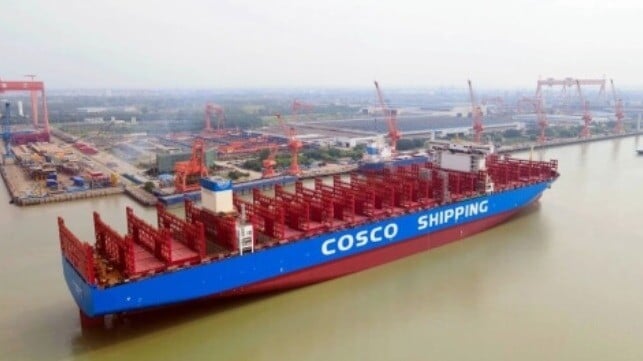White House Softens Proposal for Steep Port Fees on Chinese Ships

As markets continue to fall on the news of a 145 percent tariff on all Chinese goods, the White House has quietly signaled that it will soften its plans for multimillion-dollar port fees on Chinese ships - fees that U.S. oil companies, exporters and farmers strongly opposed.
Six sources with knowledge of the matter told Reuters that the White House may delay or reduce the fees proposed by the Office of the U.S. Trade Representative (USTR). The head of the office, Trade Representative Jamieson Greer, confirmed Tuesday that some of the fees might not be put into action and might not be added together.
The fees - which could have cost up to $3.5 million per port call for Chinese-built ships, under the original plan - drew protests from major domestic industries. The fees would have raised the cost of shipping for exporting oil, grain, machinery and other goods, making them less competitive or pricing them out of the global market, with broader effects on the U.S. economy. Some smaller U.S.-based carriers like Atlantic Container Line (ACL) warned that they would have to shut down American operations, and at least one major U.S. shipowner - Genco - said that it might cease calling in U.S. ports. Energy Products Partners, a leading U.S. midstream firm, warned that the fees would also have a devastating impact on oil and gas exports. If the fees take effect, "there will be no ‘drill baby drill’ [and] the ‘liquid gold’ under our feet would stay in the ground," EPP told Lloyd's List.
Reuters' sources said that USTR had not considered all types and sizes of ships when it formulated the port fees. The multimillion-dollar flat-fee structure was designed only with the largest container ships in mind; the impacts on tankers, bulkers, ro/ros and smaller boxships were not taken into account before the policy proposal was released. Now that USTR is looking at the broader effects on shipping, the fee structure will likely be recalibrated based on vessel size, making it proportional to the amount of cargo carried.
The administration's new executive order on revitalizing American maritime - a policy directive signed Tuesday - could be used as an alternative way to pursue USTR's domestic objectives, instead of penalizing foreign-flag shipowners with fees on Chinese ships, according to World Shipping Council President & CEO Joe Kramek.
"The Executive Order outlines several encouraging elements that reflect a serious focus on rebuilding the American maritime industry," Kramek said Thursday. "Measures to impose retroactive port fees would disadvantage all aspects of the supply chain - from consumers to farmers, from energy producers to manufacturers."
WSC previously raised the possibility of a legal challenge to USTR's fees. Last month, Kramek suggested that USTR's action was a plan to boost U.S. domestic shipbuilding, rather than a proposal to counter unfair trade practices. "Generating demand for domestic products and raising government revenue – whether to support a domestic industry or for other purposes – are not permissible bases for actions under Section 301," said Kramek in a statement last month, referring to the U.S. Trade Act of 1974.
